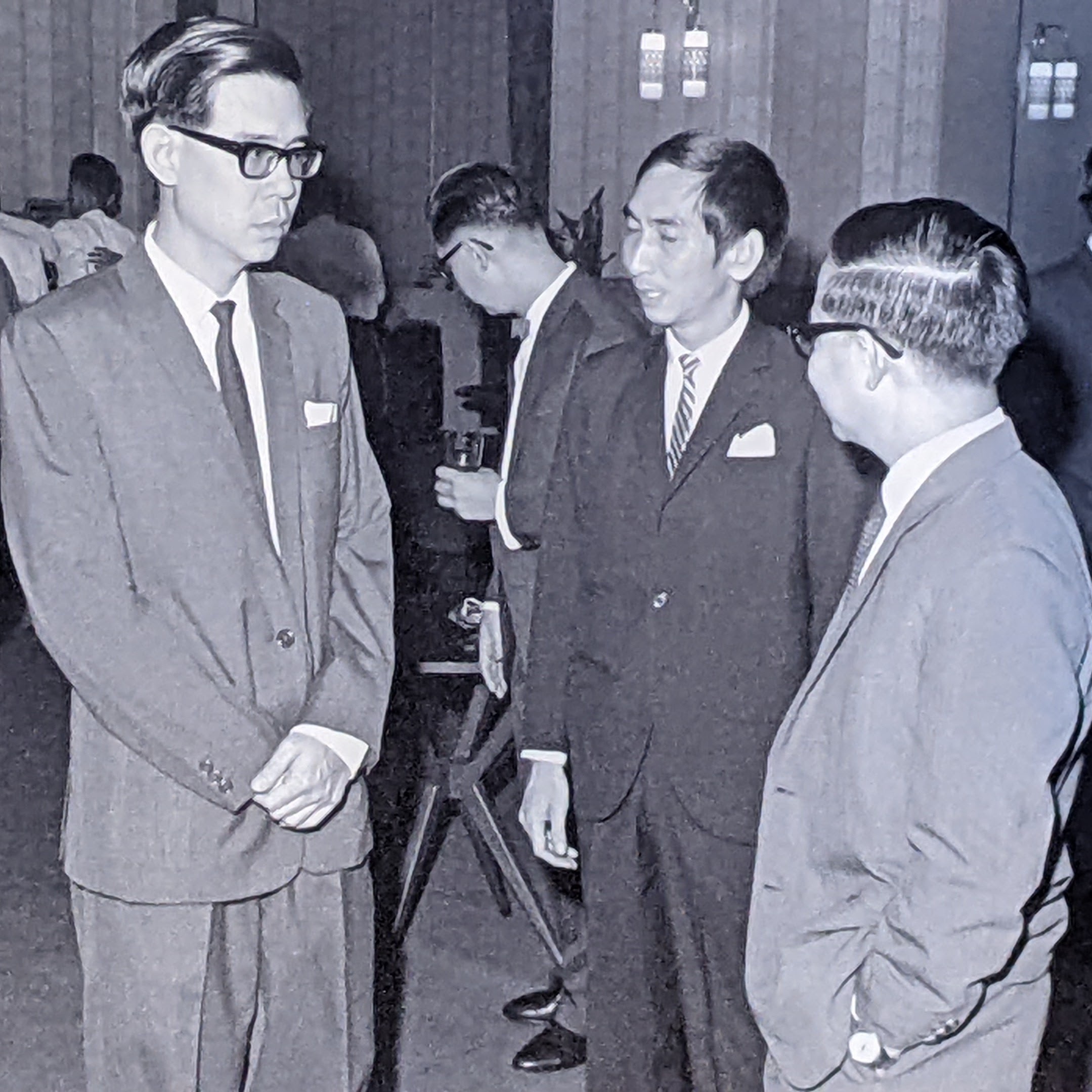Tribute to Alfred Wong Hong Kwok (4 Jan 1930 - 28 Sept 2024)

Alfred Wong, a distinguished architect of Singapore and the first recipient of the Singapore Institute of Architect’s (SIA) Gold Medal Award for Lifetime Contribution (1998) as well as DesignSingapore’s Golden Jubilee Award (2015), passed away on September 28, 2024.
Despite his achievements, Alfred Wong disliked being labeled a ‘pioneer architect’ of Singapore. When I interviewed him in 2005 for URA’s Singapore 1:1 Exhibition on significant works shaping Singapore’s urban landscape, he politely corrected me. Wong emphasized that AWP, the partnership he formed with his younger brother Edward in 1957, remained at the forefront of architectural innovation. The firm was constantly reinvigorated with fresh graduates and brimming with new ideas. Nevertheless, his seminal contributions are well recognized, notably in projects such as the National Theatre (1965, demolished), Hotel Malaysia (1975, demolished), Singapore Polytechnic (1973-79), and a series of modernist Catholic churches that defined Singapore’s immediate post-independence architectural landscape.
Wong was no accidental architect in what he called an “accidental nation.” His lineage in the building industry, equally illustrious, traces back to Wong Ah Fook, the legendary builder of modern Johor Bahru in Malaysia. After completing his studies at the University of Melbourne, Wong returned to a newly independent Singapore, ready to embrace the uncertainties of the time. A brief stint at Swan MacLaren revealed the declining grip of colonial practices, with lingering patronage obstacles to overcome. Wong, along with other returning graduates, quickly rose to the challenge, establishing credibility and respect within the profession.
In the years that followed, Alfred Wong elevated the prestige of architecture in Singapore, both through practice and education. As a true gentleman-architect, he placed design at the forefront of physical development, during a time when architects advised and orchestrated decisions rather than merely executing instructions. His work spanned a broad range of typologies, including private residences, public institutions, and factories. While initially ambivalent about the influx of “foreign talents” to Singapore in the early 1980s, Wong later credited their presence with raising the bar for professional standards and, more importantly, embedding in both clients and the public the appreciation for the ‘value’ of design beyond mere functionality.
Alfred Wong’s work was art, though many of his creations have unfortunately been demolished or altered beyond recognition. His designs exhibited a formal, visual, and spatial sensibility that was both studied and controlled. During the austere 1970s, he demonstrated how simple forms and commonplace materials like brise-soleil, bricks, and geometric patterns could bring aesthetic pleasure. His own residence at Bintong, with its carefully curated furnishings and details, encapsulates these sensibilities. Wong’s architecture—like that of his peers—was topical and modern without the complexities of theoretical concerns or anxieties over ‘meaning.’ His work seamlessly fused modernist sensibilities with local context, exemplifying critical regionalist architecture long before such a term existed.
The accolades he received reflect his high standing in the profession. He provided leadership as President of the SIA (1963-65), served as Chairman of the Preservation of Monuments Board, and contributed to several of URA’s Architectural Design Panels. His commitment to architectural education was unwavering; from Singapore Polytechnic’s early days to the University of Singapore and later NUS, he generously shared his time and expertise. For over two decades, he served in various capacities, including as an SIA representative to the NUS Council and as an external examiner for the university’s design programs. In recognition of his outstanding contributions, Alfred Wong was awarded the Public Service Star (BBM) by the President of Singapore in 2005.
His public service, aimed at creating a better, more responsive environment, and his award-winning designs elevated architecture as a social art. He believed in the architect’s responsibility to transcend a client’s brief, ensuring that buildings and spaces carried social significance. His legacy remains in the heightened public awareness of the importance of design in the built environment and its influence on social life.
The title of Alfred Wong’s 2016 autobiography, Recollections of Life in an Accidental Nation, reflects a tone of humility. Yet, his life and work were anything but accidental. They stand as enduring evidence of his design talent, fostered by opportunities in the uncertain moments of his time. Wong reminds us that, regardless of the challenges, perseverance, integrity in craftsmanship, and a commitment to professional responsibility must always remain paramount.
This tribute was written by Dr Wong Yunn Chii, an Honorary Fellow of the NUS Department of Architecture.